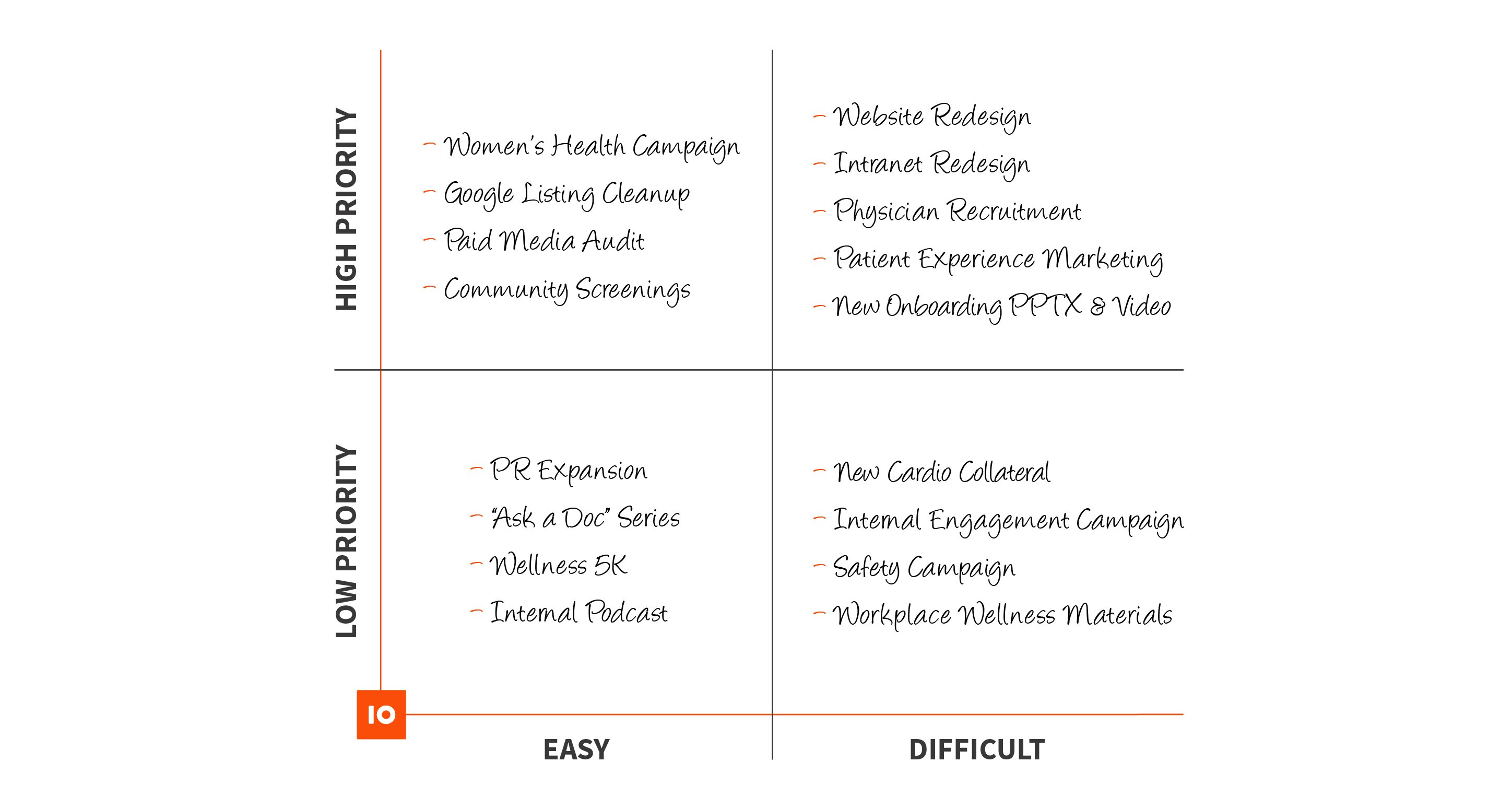Mastering the Chaos of Healthcare Marketing

Remember when you began your career as a healthcare marketer? You signed on to handle communications, advertising, and/or public relations to achieve the organizational goals and objectives. You probably never imagined the COVID-19 pandemic that rocked healthcare communications in 2020, or that your job would turn into that of a part-time firefighter.
Yes, firefighter. You and your team expend extraordinary amounts of energy trying to master the chaos of healthcare marketing by extinguishing the fires set daily throughout your organization. While this behavior is common practice, when every action is a reaction, there's no opportunity to address, let alone meet, strategic goals.
What is Firefighter Marketing?
Firefighter marketing describes all of the things that pop up unplanned, pull you away from core objectives, and cause chaos for you and your department.
With the frequency of "emergency" requests increasing, it becomes harder and harder to complete the work necessary to drive your organizational objectives forward and achieve your set goals because you're handling the latest fire! This kind of work makes the cost of firefighter marketing add up quickly and can affect you both inside and outside of the workplace. Think of a "fire" you’ve fought recently: how much time did it take for you to overcome? More importantly, what should you have been doing instead?
Whether you’re a coordinator, manager, or VP, we are all potential firefighter marketers and need to know how to combat this chaos in order to succeed. We think the key to solving the tug-of-war for time and resources involves carving out time to prioritize your strategic process thereby, preventing fires from starting or spreading. The rest of this article lays out the basic steps marketers can take to implement the 10% Secret to Healthcare Marketing Plan Success and remain focused on four core strategy areas.
4 Core Strategy Areas for Healthcare Marketing
It’s imperative to spend time annually thinking about what you want to accomplish in these four key areas:
- Branding
- Engagement
- Reputation
- Growth
It helps to picture the core elements (BERG) as steps of a pyramid. Branding forms the base of the shape, followed by engagement, reputation, and finally, growth. Each layer, or step of the pyramid, relies on the strength of the element beneath it. In other words, you can't drive growth to a service line until you have significant brand awareness, an engaged audience, and a solid reputation.
Invite your department to join a brainstorming exercise to determine what you can do over the next 12 months, or the remainder of your fiscal year, to grow and impact your organization as a whole. Jot down initiatives and ideas that will help clearly message who you are and what you do. If you’re well into your year, don’t feel like you must wait until the next year rolls around. You can easily leverage this concept any time of the year to recalibrate where you are, and where you need to go, to meet your goals.
Examples of Incorporating BERG into your marketing strategy
Discuss ways to drive your brand awareness in the community, perhaps through a rebrand, website enhancements, complete integrated campaigns, or a new round of collateral for the overall organization or service line.
Internal engagement is a critical piece of your role and will help you down the road when presented with these fires. Use this as an opportunity to develop experiential marketing strategies and new ways to drive engagement with employees, physicians, and even the community through recognition, rewards, communications, and events.
Develop a reputation plan complete with proactive ways to deal with the media, social media, listings, etc. Get ahead of the conversation by planning “Ask a Doctor” events, and lecture series and proactively managing your organization's and physicians' reputation.
Lastly, establish your primary growth areas and spend time strategically carving out ways to drive prospective patients to take action.
Use BERG brainstorming ideas to make a chart
Take these topics and ideas you’ve jotted down and work through prioritizing them on a simple grid, visually categorizing topics according to the degree of difficulty (difficult to easy) and priority (low to high).

Starting with high-priority and easy-to-execute topics, begin to craft your plan for the year. Your greatest challenge comes from evaluating your topics in the high-priority and difficult-to-execute box. Be objective in deciding what ideas will actually move the needle and drive the greatest impact on your organization. Continue to work through your lower priority boxes and begin mapping out your plan in an annual GANTT chart with categories for brand, engagement, reputation, and growth. (Don’t discard ideas that can’t be executed this year, they may be relevant when planning next year or you may have budgets open up when you least expect it.)
Develop a shared plan complete with timing and assignments and use it to gain buy-in from your leadership team.
The 10% Secret to Healthcare Marketing Plan Success
In order to truly reduce the number of fires you’re fighting, you need to spend 10% of your time focused on the critical pieces of your plan. One way to approach this is to manage your planning in buckets.

Develop your plan, and review your analytics and priorities. Partner with leadership set goals, and assign responsibility.

Re-evaluate your plan, re-prioritize if necessary, and add in any new initiatives that keep the ball rolling toward your original plan. Utilize this time to also identify areas that aren’t on target with your plan and to develop a strategy to get them back on track.

Look back on your own successes. This is important and we get it—you're caught up in the chaos and it can be very difficult to toot your own horn and look at your work and accomplishments objectively. But it will truly benefit you, in the long run, to take a few minutes to measure each month. Additionally, look at the month ahead and actually schedule time in your calendar to tackle what you need.

Look at your monthly plan and evaluate where you are trending in achieving your monthly and quarterly goals. Review your meeting schedule to determine and eliminate any that are overlapping others or unnecessary and carve out time to prepare work that needs to be completed this week. If you have staff, schedule weekly check-ins to keep track of their progress as well.

Check your schedule, create a list of the top three things you need to accomplish today and keep these three items top of mind and focus on completing them today.
Driving a value-driven plan day-to-day—that's aligned with your organization's objectives—will keep the fires at bay and the heat out of your department. This is the only surefire way to create marketing that will make its biggest impact. If your team needs help mastering the chaos of healthcare marketing, get in touch with our experts! We ❤️ strategy!
Related Articles


